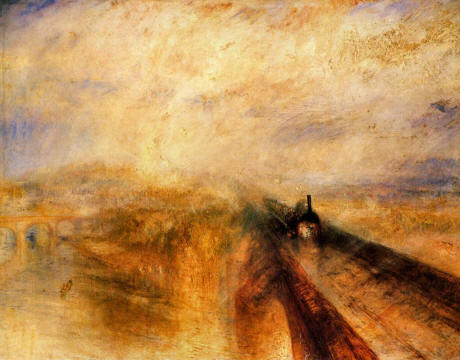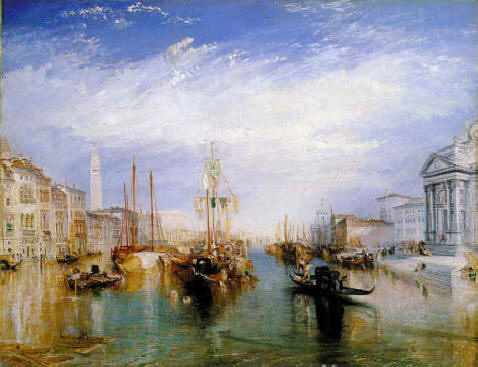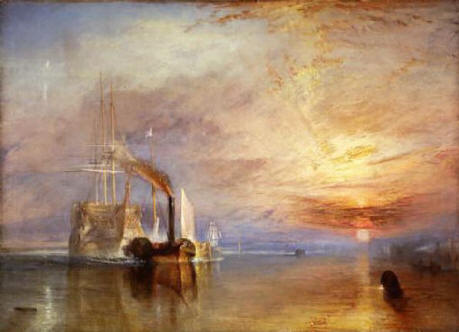-


 JMW Turner
JMW Turner
British
Artist
"The Painter of Light", English artist Joseph Mallord William Turner devoted to his entire life to art. Turner was born in London, England, on April 23, 1775. His father was a barber. His mother died when he was very young. The young Turner received little schooling. His father taught him how to read, but this was the extent of his education except for the study of art. By the age of 13 William Turner was making drawings at home and exhibiting them in his father's shop window for sale. Turner was 15 years old when he received the rare honor of having one of his paintings exhibited at the Royal Academy. By the time he was 18 he had his own studio, and before he was 20 print sellers were eagerly buying his drawings for reproduction. Turner quickly achieved a fine reputation and was elected an associate of the Royal Academy.
In 1802, when Joseph Mallord William Turner was only 27, he became a full member. He then began traveling widely in Europe. Turner's style is said to have laid the foundation for Impressionism. Although Turner was considered a controversial figure in his day, he is now regarded as the artist who elevated landscape painting to an eminence rivaling history painting. The intensity of hue and interest in evanescent light not only placed Turner's work in the vanguard of English painting, but later exerted an influence upon art in France, as well. The Impressionists, particularly Claude Monet, carefully studied the techniques of JMW Turner.
Although known for his oils, Turner is regarded as one of the founders of English watercolor landscape painting. Some of his most famous works are "Calais Pier", "Dido Building Carthage", "Rain, Steam and Speed", "Burial at Sea", and "The Grand Canal, Venice". Venice was the inspiration of some of Turner's finest work. Wherever he visited he studied the effects of sea and sky in every kind of weather. His early training had been as a topographic draftsman.
With the years, however, JMW Turner developed a painting technique all his own. Instead of merely recording factually what he saw, Turner translated scenes into a light-filled expression of his own romantic feelings. Turner’s mature work is characterized by a chromatic palette and broadly applied atmospheric washes of paint. According to David Piper's The Illustrated History of Art, his later pictures were called "fantastic puzzles." Turner was often recognized as an artistic genius. The influential English art critic John Ruskin described Turner as the artist who could most "stirringly and truthfully measure the moods of nature .
JMW Turner travelled widely in Europe, starting with France and Switzerland in 1802 and studying in the Louvre in Paris in the same year. On a visit to Lyme Regis, in Dorset, England, he painted "A Stormy Scene" which is now displayed in the Cincinnati Art Museum. An important supporter of Turner's work was Walter Fawkes, of Farnley Hall, in Otley, who became a close friend of the artist. Turner first visited Otley in 1797, aged 22, when commissioned to paint watercolors of the area. He was so attracted to Otley and the surrounding area that he returned time and time again. The stormy backdrop of "Hannibal Crossing The Alps" is reputed to have been inspired by a storm over Otley's Chevin while Turner was staying at Farnley Hall. In Hannibal Crossing the Alps (1812), an emphasis on the destructive power of nature had already come into play. His distinctive style of painting, in which he used watercolor technique with oil paints, created lightness, fluency, and ephemeral atmospheric effects.
Turner was also a frequent guest of George O'Brien Wyndham, 3rd Earl of Egremont in West Sussex and painted scenes from the grounds of the house and of the Sussex countryside, including "A view of the Chichester Canal "that Egremont funded. Petworth House still displays a number of paintings by Turner. As he grew older, Turner became more eccentric. He had few close friends except for his father, who lived with him for thirty years, eventually working as his studio assistant.